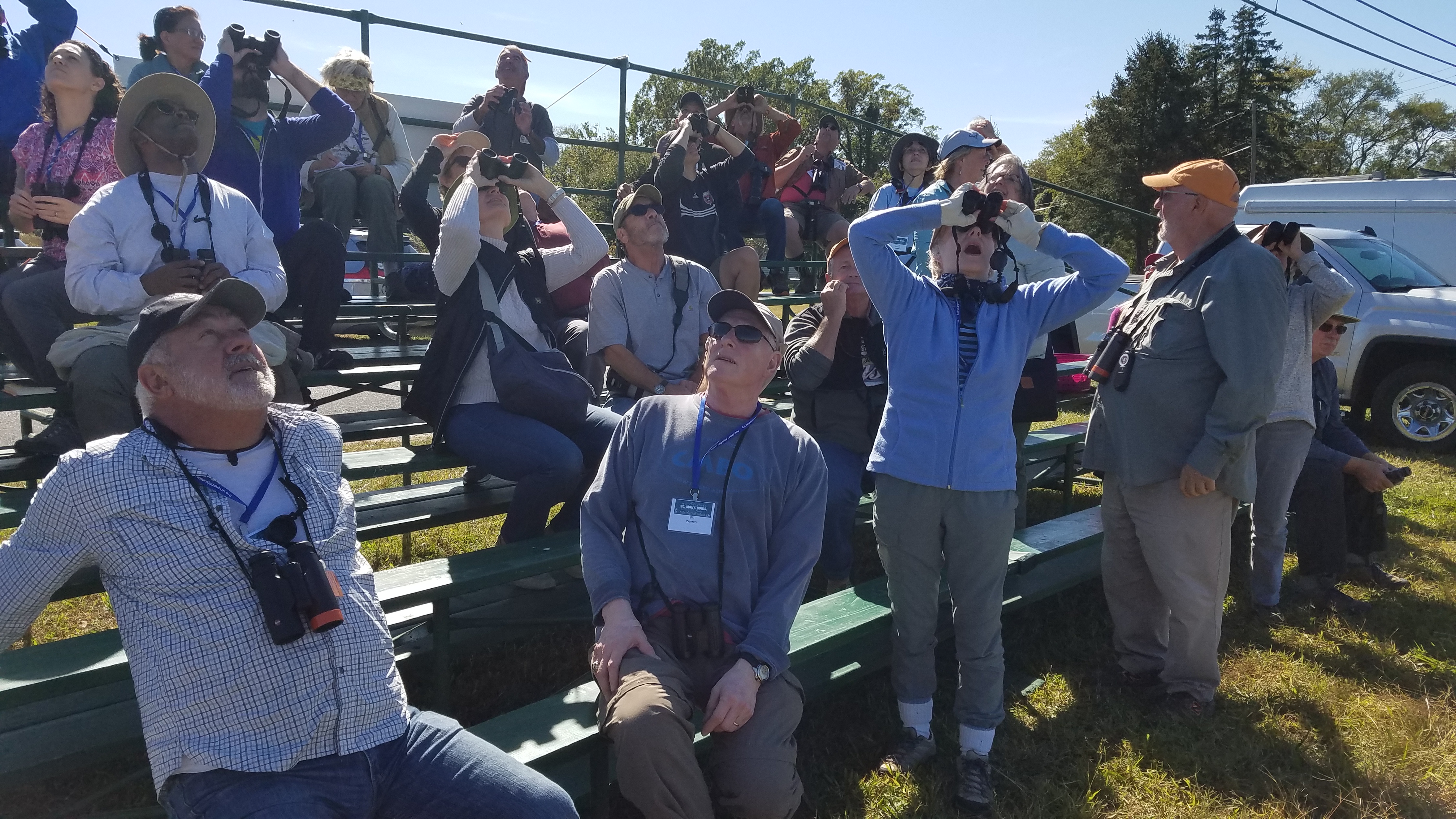COURT HOUSE – Calling Cape May County “our Serengeti,” New Jersey Audubon President and Chief Executive Officer Eric Stiles called the Audubon’s 71st annual So.Many.Birds. Cape May Fall Festival a chance for people to step away from their houses, offices, and phones and connect with nature.
Noting the cloudless blue skies and sun overhead, Stiles said Cape May County is recognized as one of the top places in North America to see birds migrating.
“Imagine, a state the size of a postage stamp, is such an important stop for the migrating birds,” he noted. “Outdoor tourism is such a part of Cape May County that bird watching has become a significant part of it.”
When Stiles referred to the Serengeti, he was talking about a region in Africa that hosts the largest terrestrial mammal migration in the world. Seventy large mammals and over 500 bird species are found in the Serengeti.
According to the Audubon, Cape May County is world-famous for bird study. Its peninsular shape, diversity of habitats and strategic position along the East Coast combine to make the Cape attractive to a rich diversity of birds. Over 400 species have been sighted in the area since July 2001.
Stiles called the Oct. 19-22 weekend event a “celebration of birds,” noting that volunteers, speakers, and attendees come from all over the world. Over 3,000 people were expected at the event, with more than 500 paid registrants participating in more than 70 activities, including events that took place in Stone Harbor, Cape May Point State Park, South Cape May Meadows, Avalon, West Cape May and near the Cape May-Lewes Ferry.
Hawk ID Master Classes took place every afternoon at The Bleachers on Stevens Street, West Cape May, overlooking the Rea Farm fields, while classes for seabirds took place at the bleachers on the beach in Avalon. There were boat trips and special trolley trips that were only open to festival registrants.
Events also included presentations such as Cape May locals Peter Dunne and Kevin Karlson, who spoke about their new book “Birds of Prey,” a tribute to the hawks, eagles, falcons, and vultures of North America.
Two representatives from bird observatory partners from Falsterbo, Sweden, and Spurn, United Kingdom, spoke about their migratory birds.
Bjorn Malmhagen and Nick Whitehouse forged an agreement with their observatories to collaborate on migration monitoring, each situated on peninsulas just like Cape May Bird Observatory.
The Cape May Convention Hall featured Jonathan Wood’s Raptor Project, a collection of live hawks, eagles, owls, and falcons with multiple interactive shows per day, and dozens of vendors with binoculars, scopes, apparel, jewelry, art and nature activities for children.
Stiles said that while the spring and fall in Cape May County saw significant wildlife activity, the “migration here never ends. Every month something is moving, whether it’s the monarch butterflies, birds or fish. The key aspect of our future is recognizing that conservation and ecology go hand-in-hand. Cape May County is embracing conservation, and its quality of life and economy are centered on its natural beauty. The locals know what they have here, and with activities like this tied in with the local businesses, it helps with the economy.”
At one Hawk ID Master Class in West Cape May, volunteer Janet Crawford, of Leesburg, asked how many attendees were first-time birders. A small number of hands rose, so she started explaining how the birds “ride the thermals,” their flight patterns, coloring and size to help everyone identify the birds flying in circles overhead.
The participants saw black and turkey vultures riding thermals, juvenile bald eagles, Cooper’s hawks, Peregrin falcons, Broadway hawks and an adult bald eagle flying low along the tree line.
The attendees, using binoculars, were looking up, left and right, to watch as many of the birds as possible.
When asked why the county was such a great area for migrating birds, Audubon Society volunteer Chuck Slugg said the birds are pushed out toward the water of the ocean.
“Look around you,” he added, “there are open fields, lots of trees, nothing that can get in the way. This area is a great one for seeing a lot of birds.”
To contact Karen Knight, email kknight@cmcherald.com.
Cape May County – Hakeem Jeffries, the house minority leader keeps saying “ we must stop MAGA” Biden calls MAGA a “ dark force” and democrats keep pushing Jan. 6 as “ the insurrection” .It is not hard to see how the…








